How to keep goats from breeding
Breeding goats can be a rewarding process. However, there may be a need to control or prevent breeding for various reasons, such as the time of year or a does age. Understanding how to keep goats from breeding effectively and safely is crucial for any goat farmer.
This helpful guide will give you preventative tips that you can use for a more successful goat breeding and goat kidding routine on your homestead.
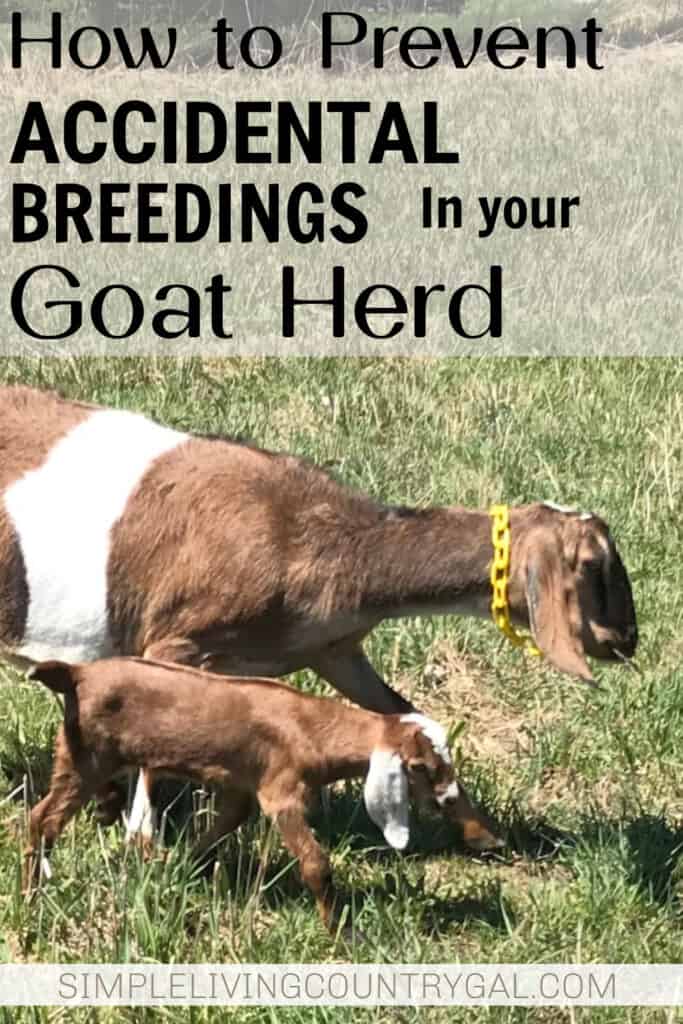
Goat kids are one of the best parts of raising goats, but there is a time and a place for breeding. If you want to control when your kids arrive, knowing how to prevent breeding will be a helpful tool to have. There are a few ways to control breedings, many of which we have used with our own herd.
Why you may want to control breeding with your goats
Before we dive in, let’s first look at the reasons why you want to be in control of when you breed your goats.
#1. Young Does
You will want to be careful that your does are the right age for breeding. A good rule of thumb is to wait until a doe is at least ten months of age, although we prefer to wait until at least twelve months before we breed.
It is important to know that a doeling enters sexual maturity as early as three months of age. And although I have not heard of goats getting bred that young, it is a possibility. That means you will want to prevent accidental breedings until your doelings are at the right age.
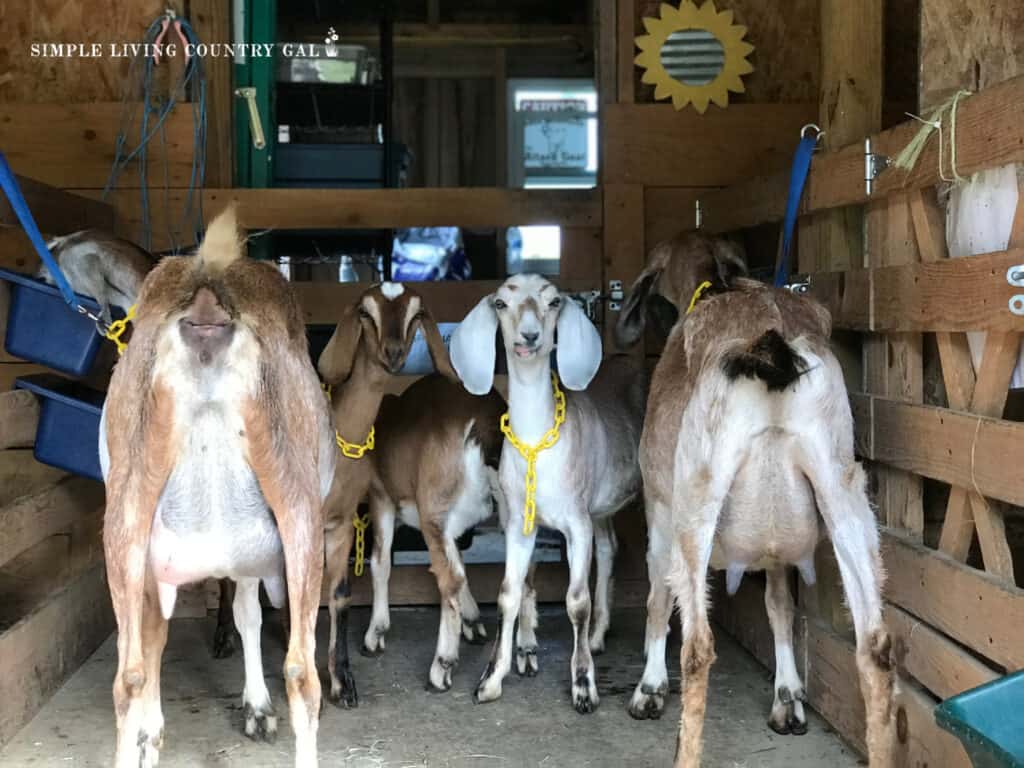
#2. Harsh weather
It may surprise you that weather is a key factor when you breed your goats. Where we live, the winters can get really harsh, sometimes well into the negative temperatures. Because of that, we like to control the timing of when we breed our goats, so the kiddings happen in early spring when the weather is warmer.
For the first few years, we had kids born each January, and it was miserable not only for us but also for our goats. We then adjusted our fall breeding schedule, giving us a due date in March/April. This is a much easier time and one we have stuck with for years.
#3. In breeding
In breeding, is when closely related goats breed with each other. This is something you will want to prevent in your herd as this can cause health issues.
If you plan to grow your herd, you must keep this in mind. If a buck breeds a doe and that doe has females, you will need to find a different buck to breed them, or you can sell the offspring and purchase new lines.
#4. Protection
If you have a goat in poor condition, fighting off diseases such as parasites, or has an injury, holding off breeding can help her recover. Remember, a doe needs to be able to hold the weight of a heavy, enthusiastic buck, so do your best to give them the best chance from the start.
We have one more thing to talk about before we get to the good stuff, and that is signs of a bred doe.
How can you tell if a goat has been bred?
A goat farmer once told me that if you want to know if a got was bred in the fall, watch for kids to be born in the spring. I took this to mean that a bred goat was hard to recognize, but I learned over the years that this is not always true.
These are a few clues that will tell you if your goat was bred without having to call in a vet.
Clue #1. Dirty back. If a buck mounted a doe, her back or belly may have scuff or dirt marks from the buck’s hooves.
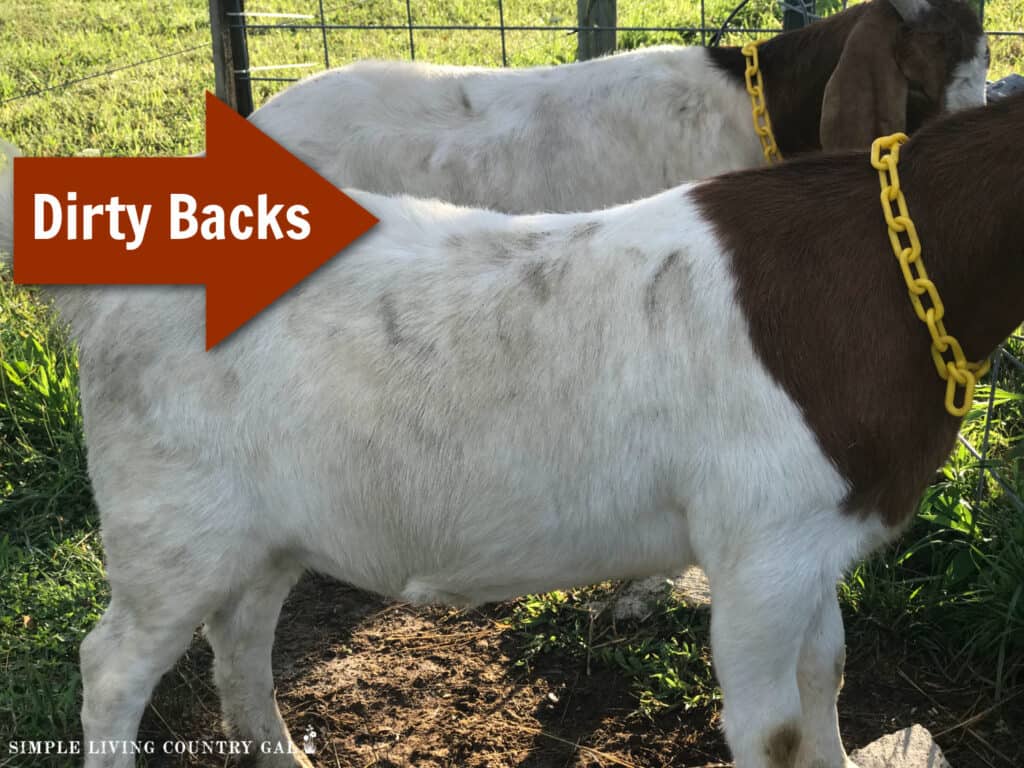
Clue #2. Lack of interest. If a doe is bred, she will lose interest in the bucks and vice versa. If they continue to show interest in each other, it’s likely that breeding has not occurred.
Clue #3. This sign will show about 2 weeks after breeding. If you place your hand in front of the udder on the belly, and it feels firm, there is a good chance she is bred. A bred doe’s belly will be firm to the touch, whereas a non-bred doe will feel soft and loose. You can check on a doe that is not bred to compare the firmness.
How do you prevent unwanted breeding?
There are a few options you can use to prevent unwanted breeding in goats. They range from easy to involved, but it is important to know them all so you can choose the best option for you and your setup.
Option #1. Separating bucks and does
One of the most straightforward ways to prevent breeding is by separating bucks and does at all times, only putting them together when you want to breed. This can be done by keeping them in separate enclosures or a separate area of your barn.
If you choose this option, be aware that you will also need to have a separate pasture for everyone as well. Be sure to use the right fencing to keep even the most determined bucks in rut away from your does. You can see how we have a separate shelter and fenced-in grazing area for your bucks as inspiration for creating your setup.
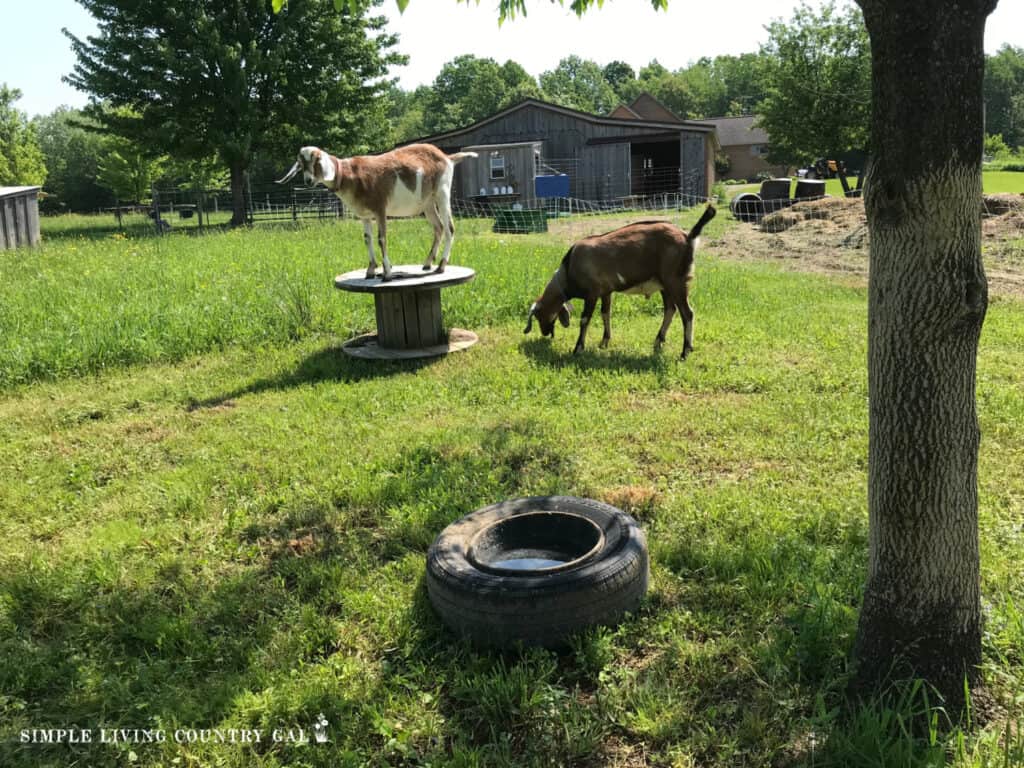
We keep everyone separate until our normal breeding window which is from September to December. At that time we move any goats out that we do not want to get bred and let our buck in with our does that we do want bred.
The bucks then stay in with our does until kids are due in the spring. By housing them together we have a higher success rate of breeding within that window.
Option #2. Using hormone injections
I have not tried this but in some cases, goat farmers may choose to use hormone injections to prevent breeding. These hormones can mimic pregnancy in female goats, preventing them from going into heat and lowering the chances of successful breeding.
Option #3. Neutering or spaying
If you do not want to have a breeding risk on your homestead, you can choose to neuter or castrate your male goats. A male goat that is castrated is called a wether, meaning he is no longer in in-tact and able to breed.
If you still want to breed, you have options, such as renting a buck, which is known as driveway breeding goats.
Option #4. Monitoring heat cycles
Female goats go into heat every 18-24 days, lasting around 12-36 hours. By closely monitoring your does’ heat cycles, you can separate them from the bucks during this time to prevent breeding.
This method is an advanced technique and not one I recommend to new goat owners as it requires regular observation and really knowing and tracking your goats’ behaviors.
Option #5. Use a Buck Apron
A buck apron, also known as an anti-breeding apron, is a special type of harness that you tie around your goat’s middle with a thick shield that hangs in front of the male goat’s genitals. This helps to prevent unwanted breeding by making it difficult for the buck to successfully mount and mate with a doe.
I have a good friend who uses one every year as her main breeding deterrent, and she claims it works great. She says this is an easy way to reduce accidental breedings, but it isn’t foolproof, which is something to keep in mind.
Buck Apron OLOR Anti-Breeding Anti-Mating for Goats and Sheep (X-Large/Long)

What we do on our homestead
Each year, we rely on our breeding routine to ensure we are on top of breedings and the dates our kids are due.
#1. We keep our buck separate until breeding season, partnering him with a wether so he is not lonely.
#2. Once the breeding season starts, we move any does that we do not want to be bred to a separate area in our barn away from the buck.
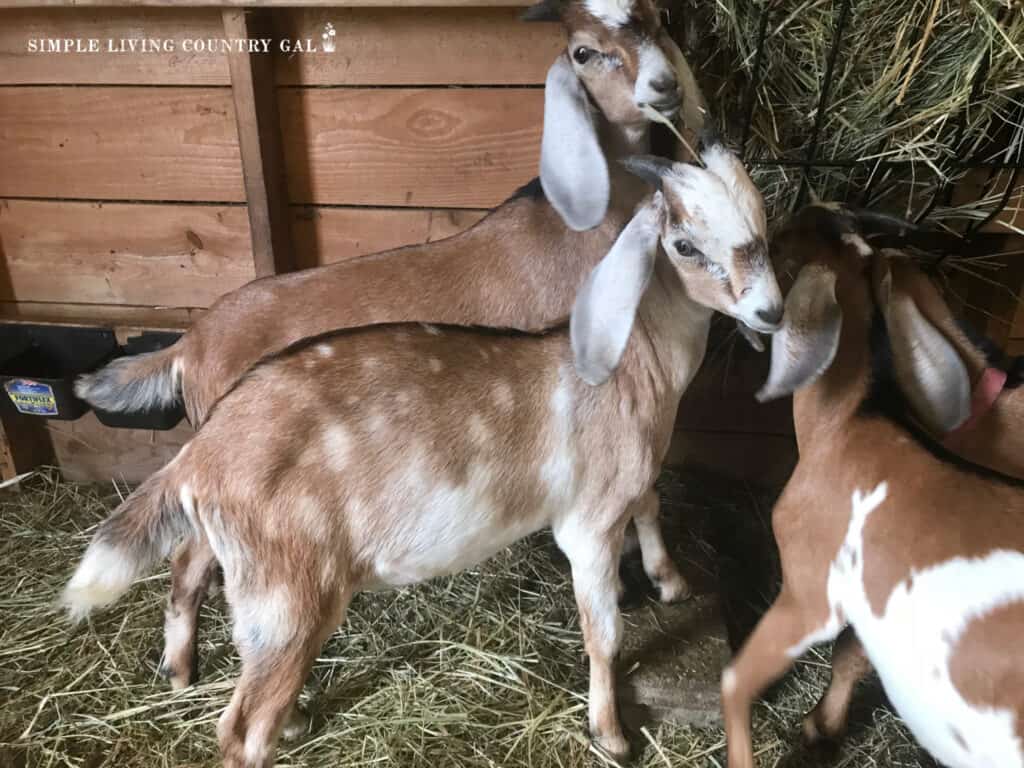
#3. Once our does are bred, if our buck is still showing signs of rut, we will put an anti-breeding apron for goats on him just in case he gets into the doeling pen.
By incorporating these three techniques into our annual breeding routine, we are able to be more proactive with our herd breeding and see very few accidents occur.
The prevention of accidental breeding in your goat herd might seem daunting at first, but as you get used to the above techniques it will get easier. Use these tips on How to keep goats from breeding to create an efficient breeding routine that matches the calendar of your farm and where you live.



